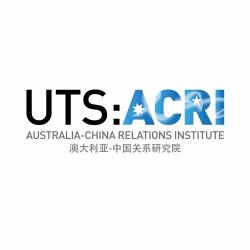Some analysts suggest that China’s long-term economic development prospects are stymied by its ageing population, and claim that China will ‘grow old before it gets rich’. Does this mean China will never get rich? Are countries more likely to become rich if their population is young? How do Australia’s ageing population challenges compare with China’s? What impact will an ageing China have on Australian exports?
Lauren Johnston, Postdoctoral Research Fellow at the University of Melbourne, joins James Laurenceson, Deputy Director of the Australia-China Relations Institute (ACRI) at the University of Technology Sydney to discuss the effects of China’s ageing population on its economy and the need to refresh debate about the effects of demographic changes on economic development.
Guest: Lauren Johnston, Postdoctoral Research Fellow, University of Melbourne
Host: James Laurenceson, Deputy Director, Australia-China Relations Institute, University of Technology Sydney
Some analysts suggest that China’s long-term economic development prospects are stymied by its ageing population, and claim that China will ‘grow old before it gets rich’.
Does this mean China will never get rich? Are countries more likely to become rich if their population is young? How do Australia’s ageing population challenges compare with China’s? What impact will an ageing China have on Australian exports?
Lauren Johnston joins James Laurenceson to discuss the effects of China’s ageing population on its economy and the need to refresh debate about the effects of demographic changes on economic development.
The notion that China was ‘getting old before rich’ originated from research in the mid-1980s by Wu Canping, a demographer at Renmin University. Wu argued that the one child policy and fall in fertility rates would result in China’s population having a high share of those aged over 65 before the country could achieve high-income status and recognition as a developed economy.
However, demographic structures across the world have shifted since this assessment. More recently, most countries entering the high-income bracket are already old. Women are having fewer children or delaying childbirth, and improved healthcare services contribute to longer life expectancies.
There are structural differences between Australia’s and China’s ageing populations. Australia may be described as a ‘rich and old’ country – one that has an ageing population but is comparatively wealthy. China, on the other hand, may be described as ‘old and not yet rich’. Most of China’s senior citizens were poor for most of their lifetimes, and don’t drive consumption trends.
The Chinese government has made significant investment in education over the last three decades. This means there is higher potential for productivity and innovation gains, which in turn could open up new frontiers of growth for China and potentially drive it into the high-income group. By contrast, the human capital gap between Australia’s young and old is narrower.
Australia has more experience in managing its ageing population, and is sharing lessons with China as it develops its aged care sector. In terms of tourism, China’s ‘silver market’ has not been targeted as much as it could be, as China’s senior citizens are now wealthier and are in a better financial position to travel overseas. The Australian tourism industry could introduce methods to attract senior Chinese citizens to make their first trip abroad to Australia, catering to their specific requirements.
Theme music by Sam J Mitchell.


